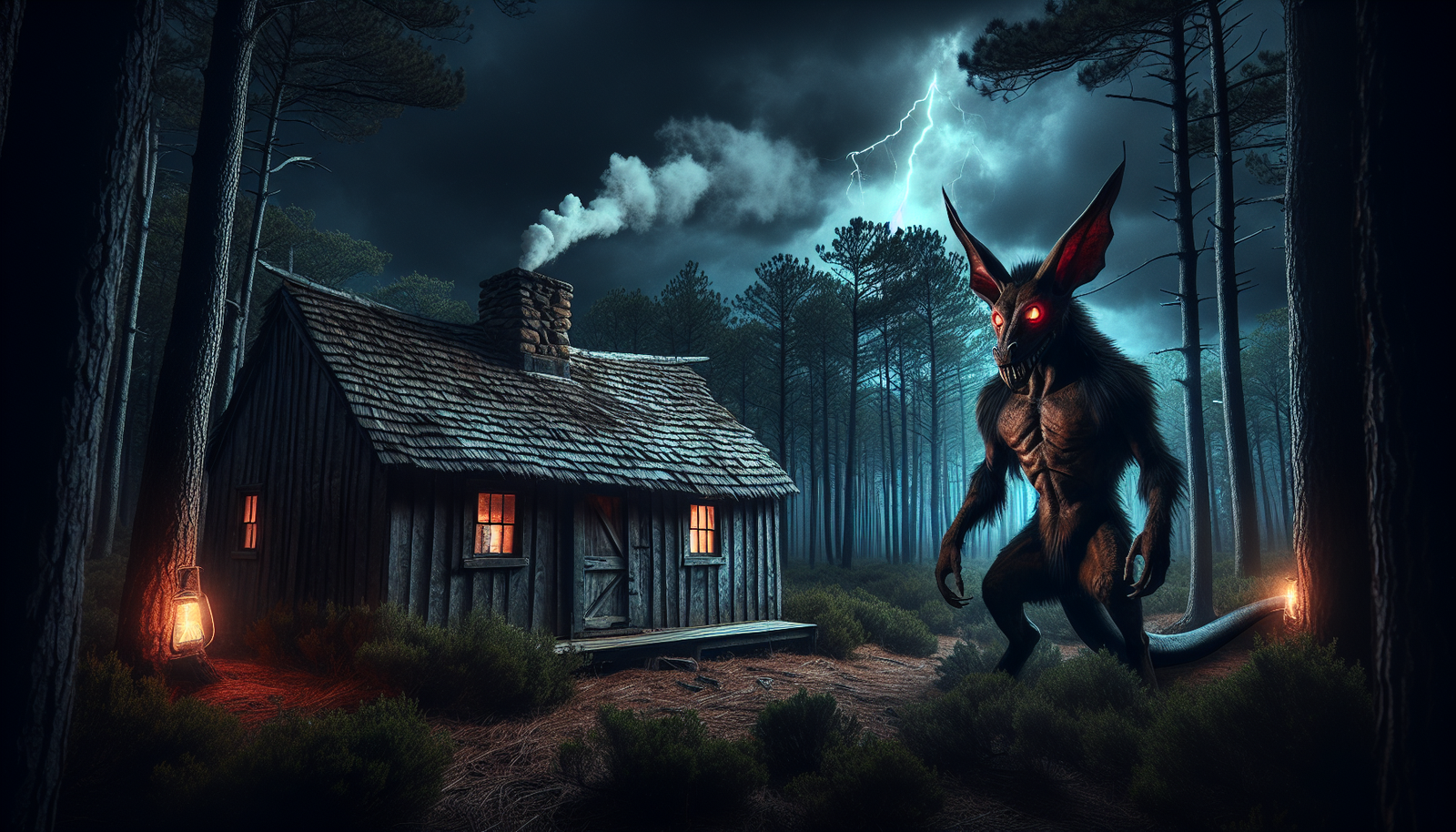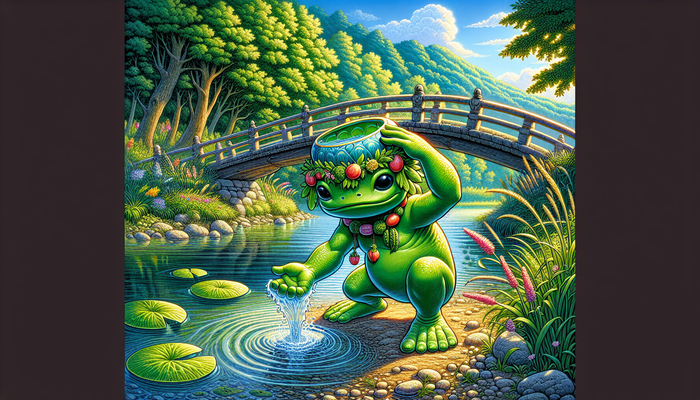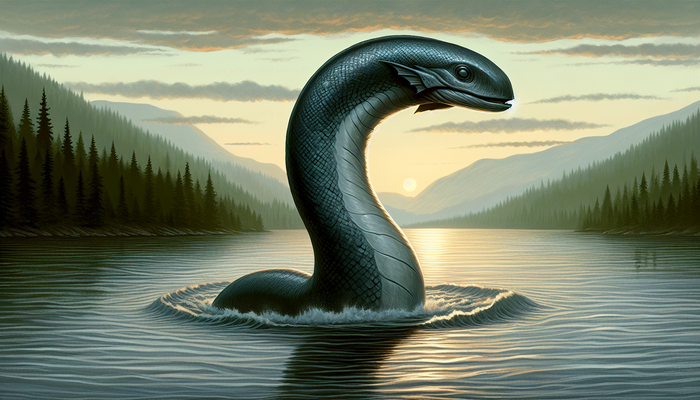Exploring New Jersey Devil Folklore: The Legend and Its Origins

By Anthony Romano, Cryptozoologist
The Birth of a Legend
Deep in the heart of New Jersey's Pine Barrens, a legend has taken root that has captivated the imaginations of locals and visitors alike for nearly three centuries. The Jersey Devil, a creature as enigmatic as the dense forests it's said to inhabit, has become more than just a tale told around campfires. It's a cultural touchstone, a source of both fear and fascination that has shaped the identity of the Garden State in ways both subtle and profound.
Picture, if you will, a stormy night in 1735. The wind howls through the pines, rain lashes against the windows of a humble home, and inside, a woman named Mother Leeds is about to give birth to her thirteenth child. What happens next has been the subject of whispered conversations and sensational headlines for generations.
To understand the Jersey Devil, we must first understand the world that gave birth to it. The Pine Barrens of the 18th century were a wild and mysterious place, home to outcasts, fugitives, and those seeking to carve out a life away from the prying eyes of colonial society. It was a land where superstition held as much sway as reason, where the line between the natural and supernatural was often blurred.
Jane Leeds, also known as Mother Leeds, was no stranger to the hardships of frontier life. Already a mother to twelve children, the prospect of a thirteenth must have seemed like a cruel joke of fate. As labor pains wracked her body on that fateful night, she is said to have cried out in anguish, "Let this one be the devil!"
Whether a moment of desperation or a genuine curse, those words would echo through history. The child, by all accounts, was born normal. But within moments, something extraordinary and terrifying occurred. The infant began to change, its body contorting and growing at an impossible rate. Witnesses described a transformation that defied belief: the baby's head elongated into that of a horse, leathery wings sprouted from its back, its legs lengthened and ended in cloven hooves, and a forked tail lashed behind it.
The creature let out a bone-chilling shriek that silenced the storm outside. In a flurry of wings and terror, it attacked those present in the room before flying up the chimney and disappearing into the night, leaving behind a legacy of fear that would endure for centuries.
This account, dramatic as it is, is just one version of the Jersey Devil's origin. Like all good folklore, the tale has evolved over time, with different storytellers adding their own flourishes and interpretations.
Variations on a Theme
The story of Mother Leeds and her demonic offspring is the most widely known version of the Jersey Devil's birth, but it's far from the only one. In some tellings, the creature's origins are tied to the political and religious tensions of colonial America.
One variation places the blame not on Mother Leeds herself, but on a curse placed upon her by a traveling gypsy. In this version, Leeds, perhaps showing the callousness that comes with exhaustion and poverty, turns away a beggar woman seeking food. The gypsy, enraged by this lack of charity, curses Leeds's unborn child, dooming it to a monstrous fate.
Another tale, set against the backdrop of the American Revolution, speaks of a young woman who falls in love with a British soldier. Her community, viewing this as an act of betrayal, curses her. When she gives birth, the child emerges as the Jersey Devil, a physical manifestation of the perceived treachery.
These variations speak to the malleable nature of folklore, how stories shift and change to reflect the fears and preoccupations of the times. The Jersey Devil, in this light, becomes more than just a monster. It's a canvas onto which people project their anxieties about outsiders, about the consequences of moral failings, and about the unknown dangers lurking in the wilderness.
The Leeds Family Legacy
To truly understand the Jersey Devil legend, we must look at the Leeds family, whose name became inextricably linked with the creature. Daniel Leeds, a prominent figure in early New Jersey history, unwittingly played a role in setting the stage for the legend that would haunt his family for generations.
Leeds was a man of science and mysticism, an unusual combination that put him at odds with the prevailing Quaker community of the time. His publication of almanacs that included astrological information was seen as heretical by his peers. The Quakers, known for their plain living and rejection of the occult, viewed Leeds's work with suspicion and hostility.
This conflict came to a head when the local Quaker meeting censored Leeds's almanacs, destroying copies and publicly denouncing him. Leeds, feeling betrayed by a community he had once been a part of, retaliated by publishing anti-Quaker tracts. This very public feud led to Leeds being labeled "Satan's Harbinger," a moniker that would prove prophetic in the most unexpected way.
The Leeds family's reputation was further tarnished by their association with the unpopular royal governor of New Jersey, Lord Cornbury. In a time of growing anti-monarchist sentiment, the Leeds's loyalty to the crown marked them as outsiders and potential threats.
It's not hard to see how this backdrop of religious and political tension could give rise to supernatural rumors. The Leeds family, already viewed with suspicion and fear, became the perfect candidates for a tale of demonic offspring.
The involvement of Benjamin Franklin in this saga adds another layer of intrigue. Franklin, in his rivalry with Titan Leeds (Daniel's son) over competing almanacs, playfully predicted Titan's death. When Titan didn't die as predicted, Franklin jokingly suggested that it must be Titan's ghost continuing to publish the almanac. This seemingly harmless jest may have contributed to the association of the Leeds name with the supernatural.
The 1909 Sightings: A Week of Terror
If the birth of the Jersey Devil in 1735 was the spark that ignited the legend, the events of January 1909 were the gasoline that caused it to explode into the national consciousness. For one week, from January 16 to 23, the Jersey Devil seemed to be everywhere, terrorizing communities across New Jersey and even venturing into neighboring Pennsylvania.
The reports began trickling in slowly at first. Strange tracks were found in the snow, unlike anything people had seen before. Then came the sightings. In Woodbury, a man claimed to see a creature with glowing eyes move faster than an automobile. In Bristol, Pennsylvania, a police officer fired at a winged creature, only to watch in disbelief as it flew away unharmed.
As the week progressed, the sightings became more frequent and more terrifying. In Camden, the creature reportedly attacked a trolley car, sending passengers into a panic. Social clubs were disrupted, livestock was found mutilated, and a constant state of fear gripped the region.
The media, sensing a sensational story, fanned the flames of hysteria. Newspapers published lurid accounts of encounters with the beast, often accompanied by fanciful illustrations that depicted the Jersey Devil as everything from a winged kangaroo to a dragon-like monster.
The impact on daily life was profound. Schools closed their doors, unwilling to risk the safety of children. Workers refused to leave their homes, paralyzed by the fear of encountering the creature on their commute. Mills in the Pine Barrens shut down as employees stayed home, unwilling to venture into the woods where the Devil was said to dwell.
Law enforcement was overwhelmed. Police in multiple jurisdictions reported firing on the creature, always to no effect. In Bristol, officers emptied their revolvers at the beast, only to watch it fly away unscathed. These reports from respected authority figures lent credibility to the sightings, making it harder for skeptics to dismiss the phenomenon as mere mass hysteria.
The frenzy reached its peak when the Philadelphia Zoo offered a $10,000 reward for the capture of the Jersey Devil. This astronomical sum (equivalent to over $300,000 in today's money) sparked a gold rush of sorts, with amateur monster hunters combing the Pine Barrens in search of the elusive creature.
Looking back, it's easy to see how a combination of factors could have led to this week of terror. The power of suggestion, coupled with the rapid spread of information (and misinformation) through newspapers, created a perfect storm of paranoia. Every unexplained sound in the night, every strange shadow, became potential evidence of the Jersey Devil's presence.
Yet, even as rational explanations were proposed – misidentified animals, pranksters taking advantage of the hysteria – the legend only grew stronger. The 1909 sightings cemented the Jersey Devil's place in American folklore, transforming it from a local legend to a national phenomenon.
The Anatomy of a Monster
Over the years, descriptions of the Jersey Devil have varied, but certain features remain consistent, painting a picture of a creature that seems to defy the laws of nature. Eyewitness accounts, while often conflicting in details, generally agree on a few key characteristics.
Physical Appearance
- Head: Most commonly described as resembling that of a horse, though some accounts lean more towards a goat-like appearance.
- Eyes: Said to glow an eerie red, capable of paralyzing those who gaze into them with fear.
- Neck: Often described as long and crane-like, adding to the creature's otherworldly appearance.
- Body: Descriptions vary, with some describing it as kangaroo-like, while others see it as more goat-like in its overall form.
- Wings: Invariably described as bat-like, leathery appendages that allow the creature to take to the skies with ease.
- Forelegs: Said to be surprisingly small, almost T-Rex-like in their diminutive size compared to the rest of the body. These end in clawed hands.
- Hind legs: Powerful and ending in cloven hooves, lending credence to the creature's demonic associations.
- Tail: Described as long and forked, used as both a weapon and a means of balance.
Behavior and Abilities
Eyewitnesses often speak of the Jersey Devil's incredible speed and agility. It's said to move with a grace that belies its monstrous appearance, capable of outpacing horses and even early automobiles. Its ability to fly adds another dimension to its movements, allowing it to appear and disappear with startling suddenness.
The creature is said to emit a blood-curdling scream that echoes through the Pine Barrens. This cry, described variously as a shriek, a roar, and a wail, is often the first (and sometimes only) sign of the Devil's presence. Some have likened it to the scream of a woman in distress, while others compare it to no earthly sound they've ever heard.
The Jersey Devil's reported behavior is as varied as its physical descriptions. While many accounts paint it as a vicious predator, responsible for livestock mutilations and crop destruction, others describe a more curious creature, one that seems almost as frightened of humans as they are of it. Some stories even attribute a mischievous nature to the Devil, more trickster than terror.
This inconsistency in descriptions and behavior has led some researchers to speculate that the Jersey Devil might not be a single creature, but rather a species or even a family group. This theory would explain the longevity of the legend and the wide range of sightings over the years.
The Cultural Impact of a Cryptid
The Jersey Devil has transcended its origins as a local legend to become a cultural icon, not just for New Jersey, but for cryptid enthusiasts around the world. Its influence can be seen in literature, film, television, and even sports, shaping the way people view the Pine Barrens and New Jersey as a whole.
In Literature and Media
In the world of literature, the Jersey Devil has inspired countless books, both fiction and non-fiction. Authors have used the creature as a springboard for horror novels, reimagining its origins and creating new terrifying encounters. Non-fiction works have explored the historical and sociological aspects of the legend, examining how it reflects the fears and beliefs of different eras.
Hollywood has also embraced the Jersey Devil, featuring it in various films and television shows. Perhaps most famously, an episode of "The X-Files" centered around the creature, introducing a whole new generation to the legend. While these portrayals often take liberties with the traditional descriptions, they've helped to keep the story alive in the public consciousness.
In Sports and Tourism
Perhaps the most visible impact of the Jersey Devil on popular culture can be seen in the world of sports. In 1982, New Jersey's NHL team chose to name themselves the New Jersey Devils, embracing the state's infamous cryptid as their mascot. This decision was met with some controversy at the time, with some religious groups objecting to the demonic associations. However, the name stuck, and today the team's logo – a stylized NJ with devil horns – is recognized around the world.
The Jersey Devil has also become a significant part of New Jersey's tourism industry. The Pine Barrens, once seen as a desolate and somewhat frightening place, now draw curious visitors hoping to catch a glimpse of the legendary creature. Tours of the area often include stops at locations associated with Jersey Devil sightings, and local gift shops do a brisk trade in Devil-themed souvenirs.
In Local Culture and Education
The impact of the Jersey Devil on local culture goes beyond mere commercial exploitation. It has become a source of pride for many New Jersey residents, a unique piece of folklore that sets their state apart. The creature has been the subject of countless local art projects, from murals to sculptures, becoming a symbol of the state's wild and mysterious side.
In education, the Jersey Devil legend has been used as a tool to teach about local history, folklore, and even critical thinking. Many New Jersey schools incorporate the story into their curriculum, using it as a jumping-off point to discuss the state's colonial history, the nature of oral traditions, and the importance of questioning extraordinary claims.
Skepticism and Scientific Explanations
While the Jersey Devil has captured the imagination of many, there's no shortage of skeptics who have sought to explain the phenomenon through more mundane means. These explanations range from misidentified known animals to elaborate hoaxes, each offering a potential solution to the mystery that has persisted for centuries.
Misidentification of Wildlife
One of the most common explanations for Jersey Devil sightings is the misidentification of local wildlife. The Pine Barrens are home to a diverse array of animals, some of which could, under the right circumstances, be mistaken for something more extraordinary. The sandhill crane, for instance, has been suggested as a possible culprit. These large birds, with their long necks and legs, could potentially be mistaken for something more monstrous when seen in low light or at a distance.
Cryptozoological Theories
Another theory points to the possibility of a surviving population of pterosaurs, flying reptiles thought to have gone extinct millions of years ago. While this explanation might seem far-fetched, it's worth noting that other creatures once thought extinct, like the coelacanth, have been rediscovered in modern times. However, the lack of any physical evidence, such as bones or clear photographs, makes this theory difficult to support.
Folklore and Cultural Influences
Some researchers have suggested that the Jersey Devil legend might have its roots in Native American folklore. The Lenni Lenape tribe, who inhabited the area long before European settlers arrived, had their own stories of supernatural creatures in the Pine Barrens. It's possible that these tales influenced or merged with later stories brought by colonists, evolving into the Jersey Devil legend we know today.
Hoaxes and Pranks
Hoaxes and pranks have undoubtedly played a role in perpetuating the Jersey Devil myth. During the 1909 panic, several people admitted to fabricating stories or evidence of the creature. One notable incident involved a kangaroo with fake wings attached, displayed as the "captured" Jersey Devil. These hoaxes, while eventually exposed, served to keep the legend alive and fuel further speculation.
Psychological Explanations
From a psychological perspective, the phenomenon of pareidolia – the tendency to perceive familiar patterns in random stimuli – might explain some sightings. In the dense, often foggy forests of the Pine Barrens, it's easy to imagine how a oddly shaped tree or a shadow could be mistaken for a monstrous figure.
The power of suggestion and mass hysteria also can't be discounted when examining the Jersey Devil phenomenon. During periods of heightened tension or fear, such as the 1909 sightings, people are more likely to interpret ambiguous stimuli as threatening or supernatural. Once a few sightings are reported, others are more likely to "see" the creature as well, creating a self-perpetuating cycle of fear and belief.
The Jersey Devil in the 21st Century
As we venture further into the 21st century, one might expect the legend of the Jersey Devil to fade into obscurity, relegated to the dusty shelves of folklore archives. Yet, surprisingly, interest in this cryptid seems to be experiencing a resurgence, adapting to the digital age in ways that its 18th-century originators could never have imagined.
Digital Age Sightings
Social media has become a new frontier for Jersey Devil enthusiasts. Facebook groups dedicated to sharing sightings and discussing theories have thousands of members. Twitter and Instagram are often abuzz with alleged sightings, usually accompanied by blurry photos or shaky video footage. While these modern "encounters" are often met with skepticism, they serve to keep the legend alive and introduce it to new generations.
Modern Investigations
The rise of drone technology has added a new dimension to Jersey Devil hunts. Amateur investigators now scour the Pine Barrens from above, hoping to catch a glimpse of the elusive creature. While no definitive evidence has been captured this way, the aerial footage has provided new perspectives on the vast, wild landscape that has been the Devil's alleged home for centuries.
Academic Interest
In the world of science, the Jersey Devil has become a case study in the intersection of folklore, psychology, and zoology. Researchers use the legend to explore topics ranging from the formation and spread of urban myths to the impact of storytelling on ecological conservation efforts in the Pine Barrens.
Environmental Connections
Climate change and environmental concerns have added a new layer to the Jersey Devil narrative. As the Pine Barrens face threats from development and changing weather patterns, some have reframed the Jersey Devil as a sort of environmental guardian, a symbol of the wild spaces that need protection. This eco-friendly interpretation of the legend demonstrates its continued relevance and adaptability.
Enduring Appeal
As we look to the future, it's clear that the Jersey Devil will continue to evolve and adapt. Whether seen as a literal creature, a metaphor, or simply a compelling story, it remains an integral part of New Jersey's cultural landscape. In an age of rapid technological advancement and global connectivity, the enduring appeal of this local legend speaks to a deep-seated human need for mystery, wonder, and connection to the natural world.
The legend of the Jersey Devil serves as a reminder that even in our modern, scientifically advanced world, there's still room for the unexplained, the mysterious, and the just plain weird. It challenges us to question what we know, to look at the world with a sense of wonder, and to remember that sometimes, the most enduring truths are found not in textbooks or laboratories, but in the stories we tell around campfires and pass down through generations.
As long as the Pine Barrens remain wild and people continue to venture into its depths, the Jersey Devil will live on, haunting the imagination and captivating the curious. Whether it's a flesh-and-blood creature, a product of mass hysteria, or something in between, the Jersey Devil has secured its place in American folklore, a testament to the power of a good story and the enduring human fascination with the unknown.
From Bigfoot to UFOs: Hangar 1 Publishing Has You Covered!
Explore Untold Stories: Venture into the world of UFOs, cryptids, Bigfoot, and beyond. Every story is a journey into the extraordinary.
Immersive Book Technology: Experience real videos, sights, and sounds within our books. Its not just reading; its an adventure.



























